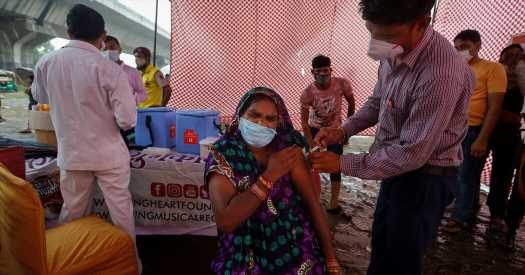Uneven vaccination rates put an economic rebound at risk, the O.E.C.D. warns.

The Organization for Economic Cooperation and Development said on Tuesday that a global economic recovery from the pandemic was finally taking hold, but it inched back its forecast for worldwide economic growth and warned that the rebound was benefiting wealthier countries more than the developing world as vaccine distribution occurs at an uneven pace.
Countries that have made big strides toward vaccinating most of their populations are bouncing back much more quickly than those that are still struggling to obtain shots, the O.E.C.D. said, raising a host of related economic problems that are affecting global supply chains and pose a risk for the future.
“The global shock that pushed the world to the worst recession in a century is now fading, and we’re now projecting the recovery will bring growth back to its pre-crisis trend,” Laurence Boone, the organization’s chief economist, said in a news briefing.
But vaccination rates remain varied, and many low-income countries and emerging markets, with the exception of China, are still far behind, Ms. Boone added. “A failure to vaccinate globally puts all of us at risk,” she said.
The warnings came as the O.E.C.D. released its semiannual economic forecast, in which it lowered its outlook for global growth, the U.S. economy and emerging markets, but raised its outlook for Europe.
The global growth outlook for 2021 was revised down slightly to 5.7 percent, from 5.8 percent.
The organization, which is based in Paris, said that the United States would grow at a 6 percent pace, down from a 6.9 percent forecast in May, while the eurozone was expected to expand by 5.3 percent, up from previous expectations of 4.3 percent growth. Slower growth in Germany is expected to be offset by faster-than-expected rebounds in France, Italy and Spain.
Growth is likely to taper off next year after an extraordinary rebound from the recession, with the global economy expected to expand at a 4.5 percent pace and the United States growing at 3.9 percent. Europe’s economy will also cool, to a forecast 4.6 percent rate.
China, the world’s second biggest economy, was forecast to grow by 8.5 percent this year, before slowing to a 5.8 percent pace in 2022.
But the robust numbers masked lingering troubles within even the richest economies, where the recovery has benefited people unevenly.
While growth in the United States returned to prepandemic levels, employment remains lower than before the economic restrictions. In Europe, which deployed billions to shield its businesses and workers from mass unemployment and bankruptcies at the height of the crisis, employment has been largely preserved.
And the virus and lagging vaccination rates continue to throw a wrench into the smooth functioning of the global economy, snarling supply chains, the O.E.C.D. said.
“There are some parts that haven’t left factories in countries with virus outbreaks,” Ms. Boone said. As a result, numerous companies are running out of inventory and slowing production, which in turn is pushing prices higher for a range of goods.
At the same time, a rapid rebound in demand has sharply increased oil prices, which are 80 percent higher than a year ago, while shipping costs “have been going through the roof,” Ms. Boone added.
Such factors have helped fuel inflation, which has “risen sharply” in the United States and some emerging market countries, the report said, but should fade once supply chain bottlenecks fade.
Inflation will ease quicker from the current alarming levels if vaccination programs speed up.
“If we continue to vaccinate and adapt better to living with the virus, supply will begin to normalize and this pressure will fade,” Ms. Boone said. “But for that we have to vaccinate more people.”
Source: Read Full Article
